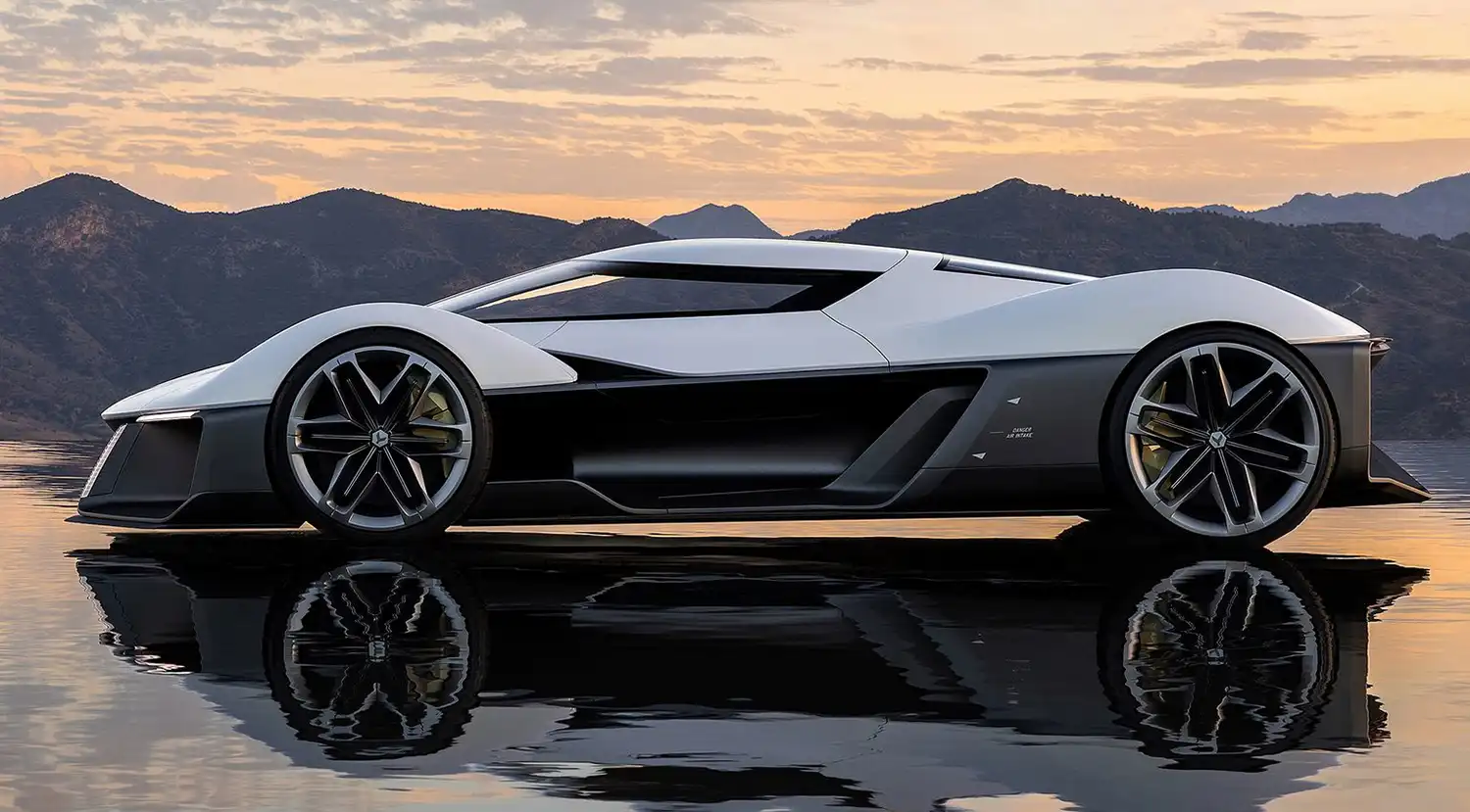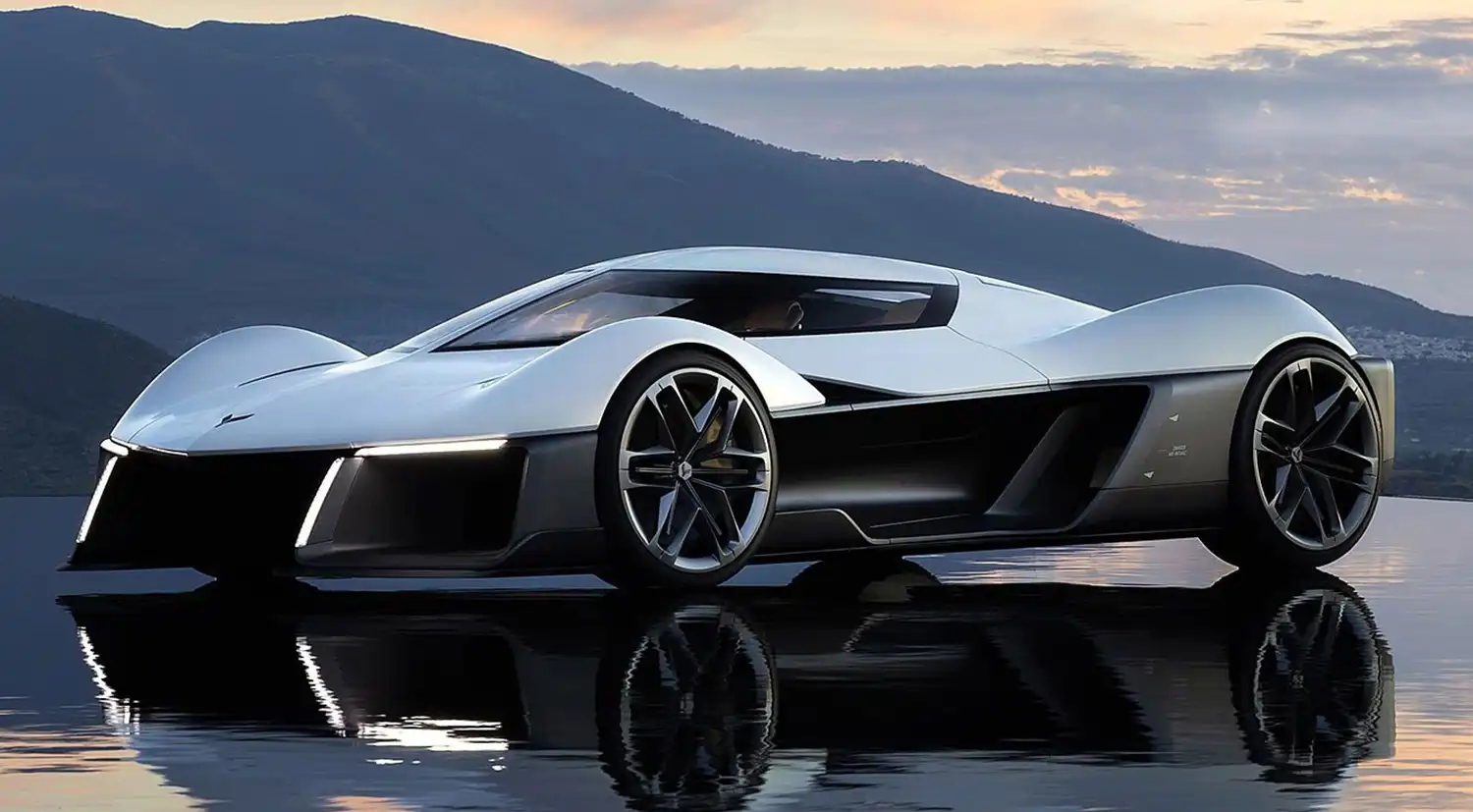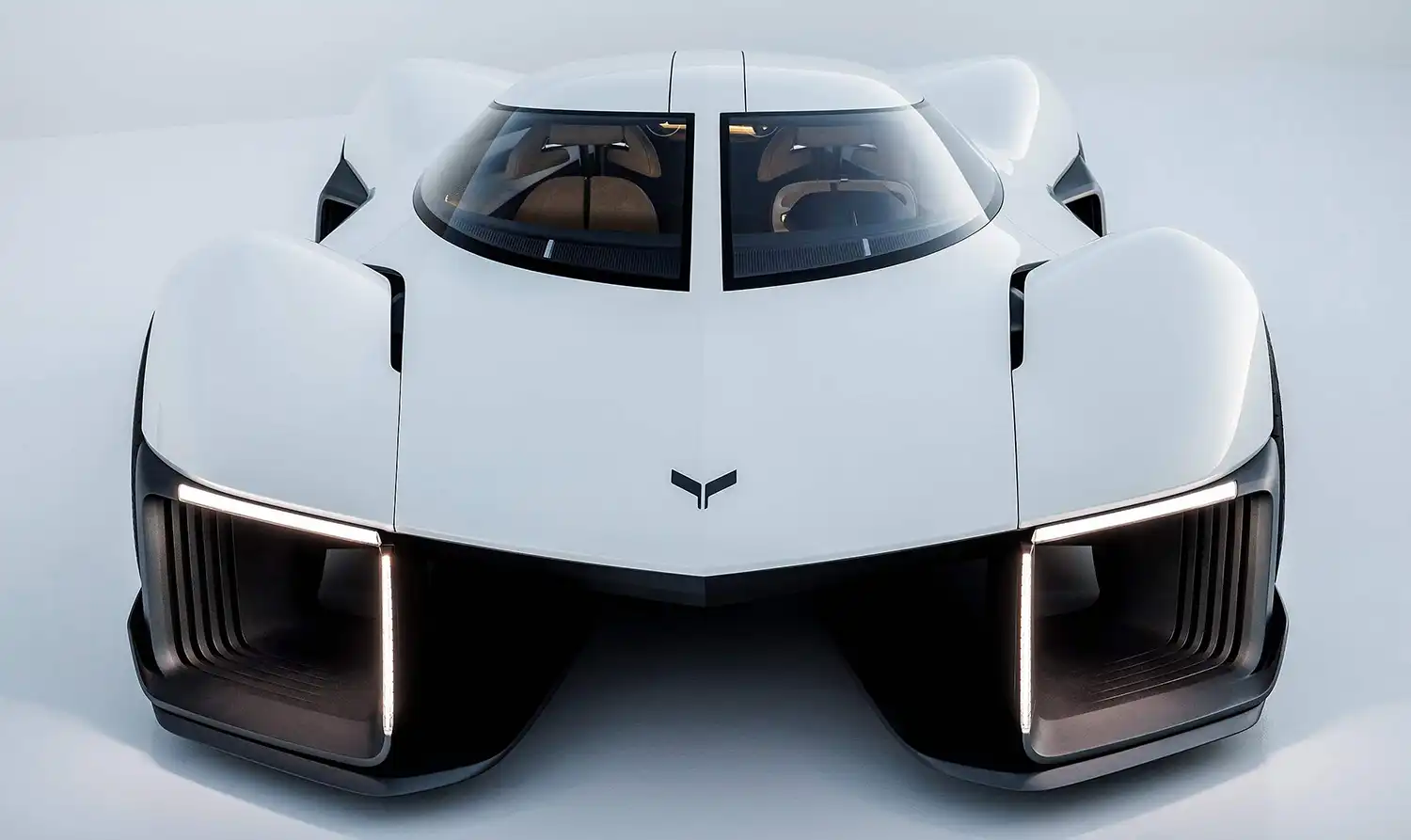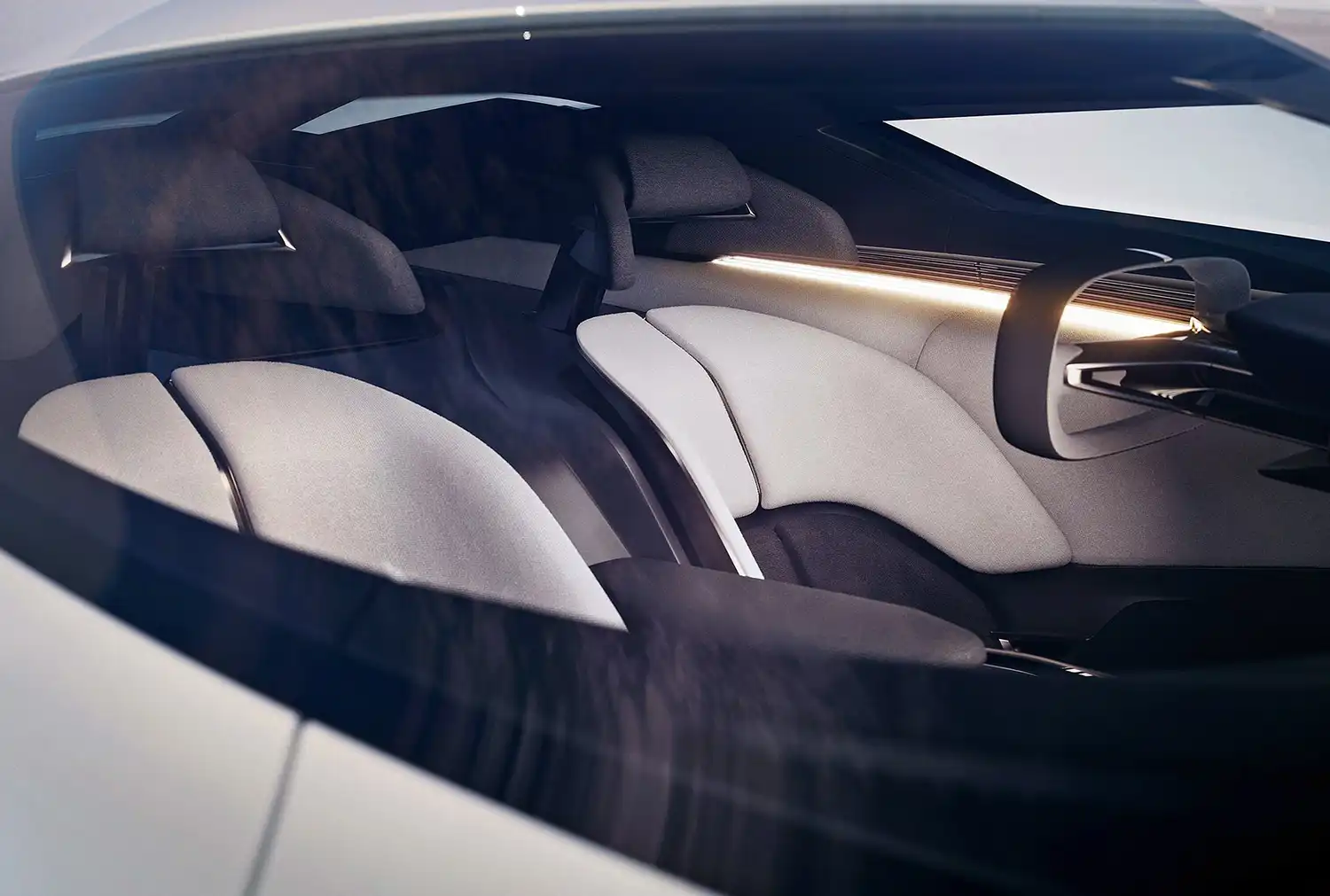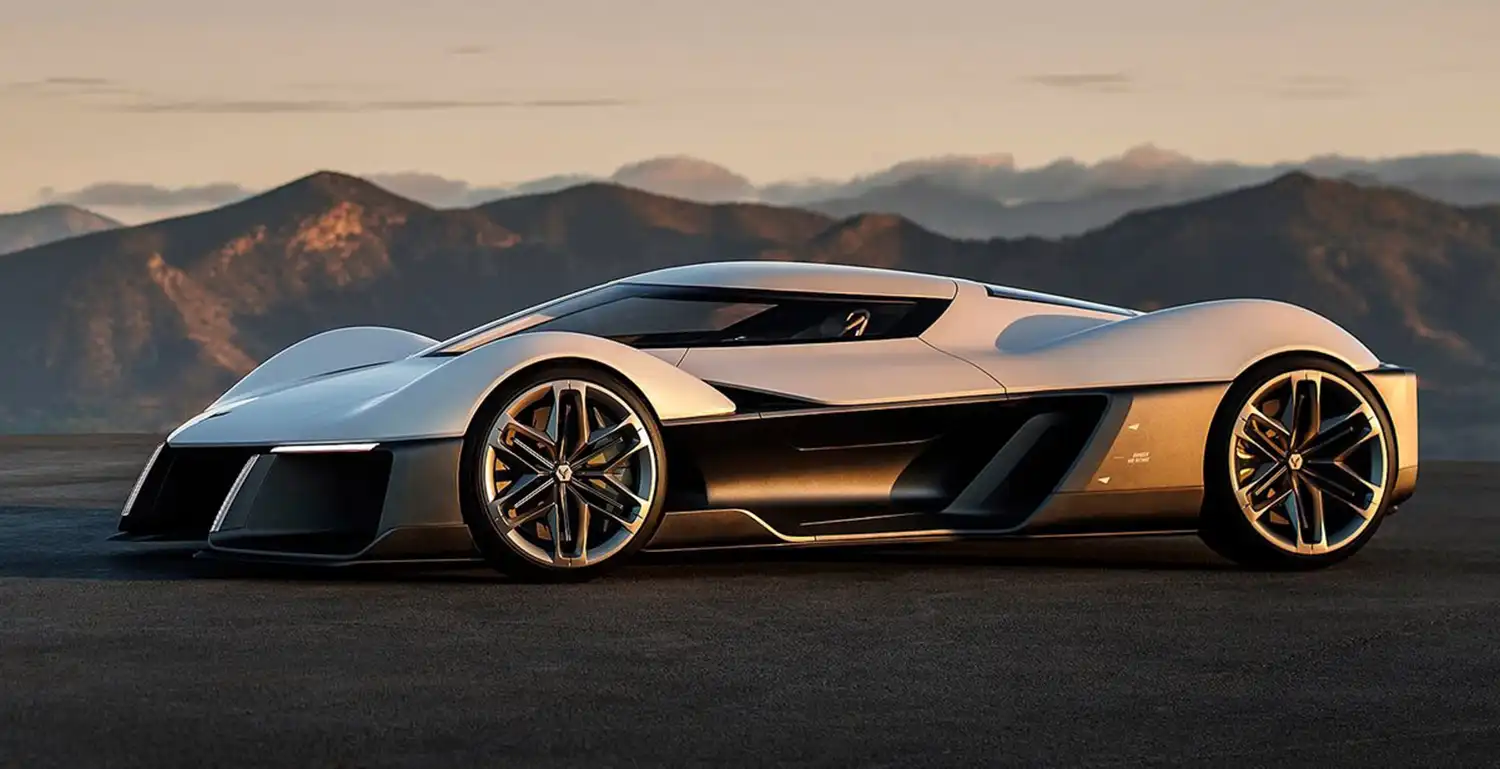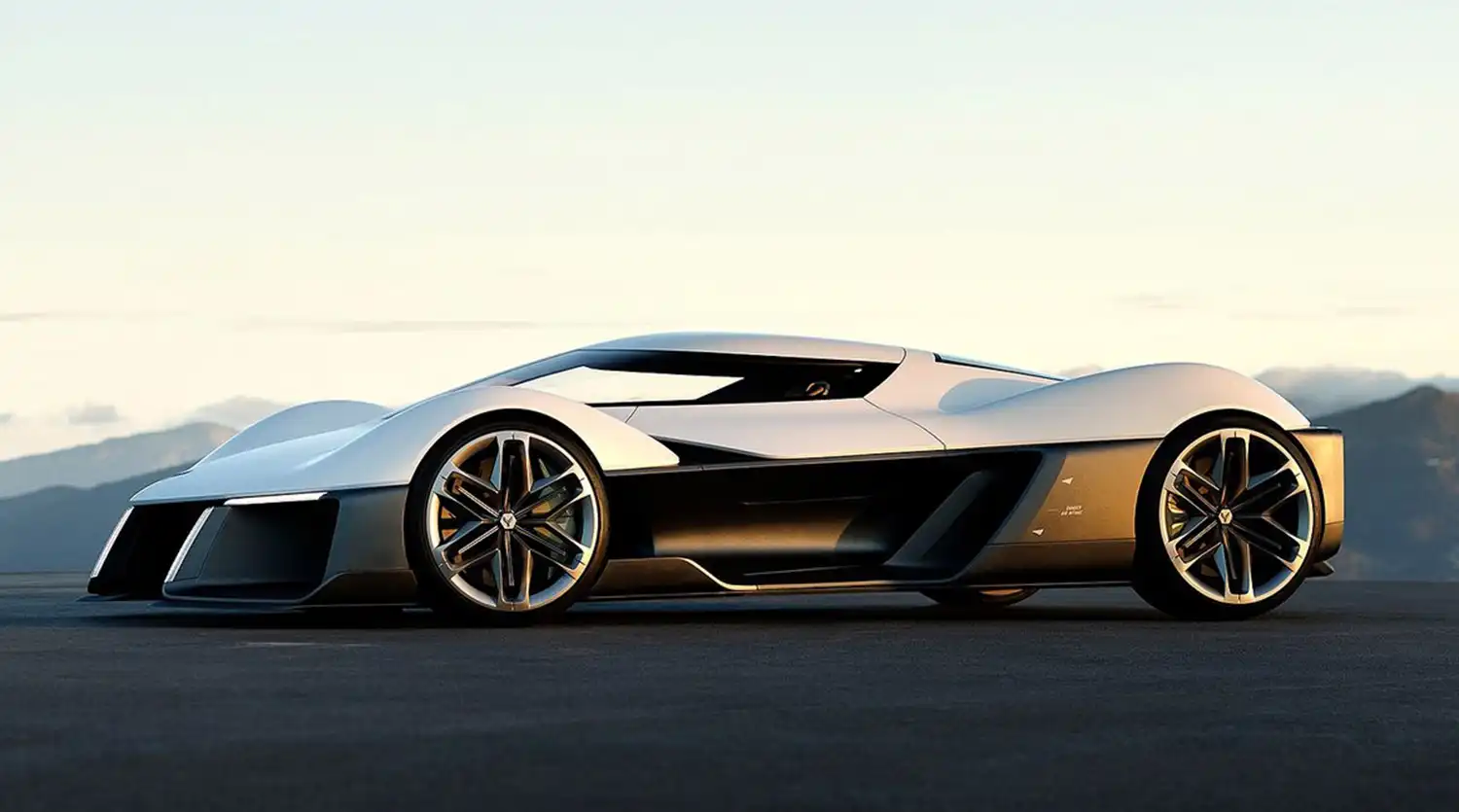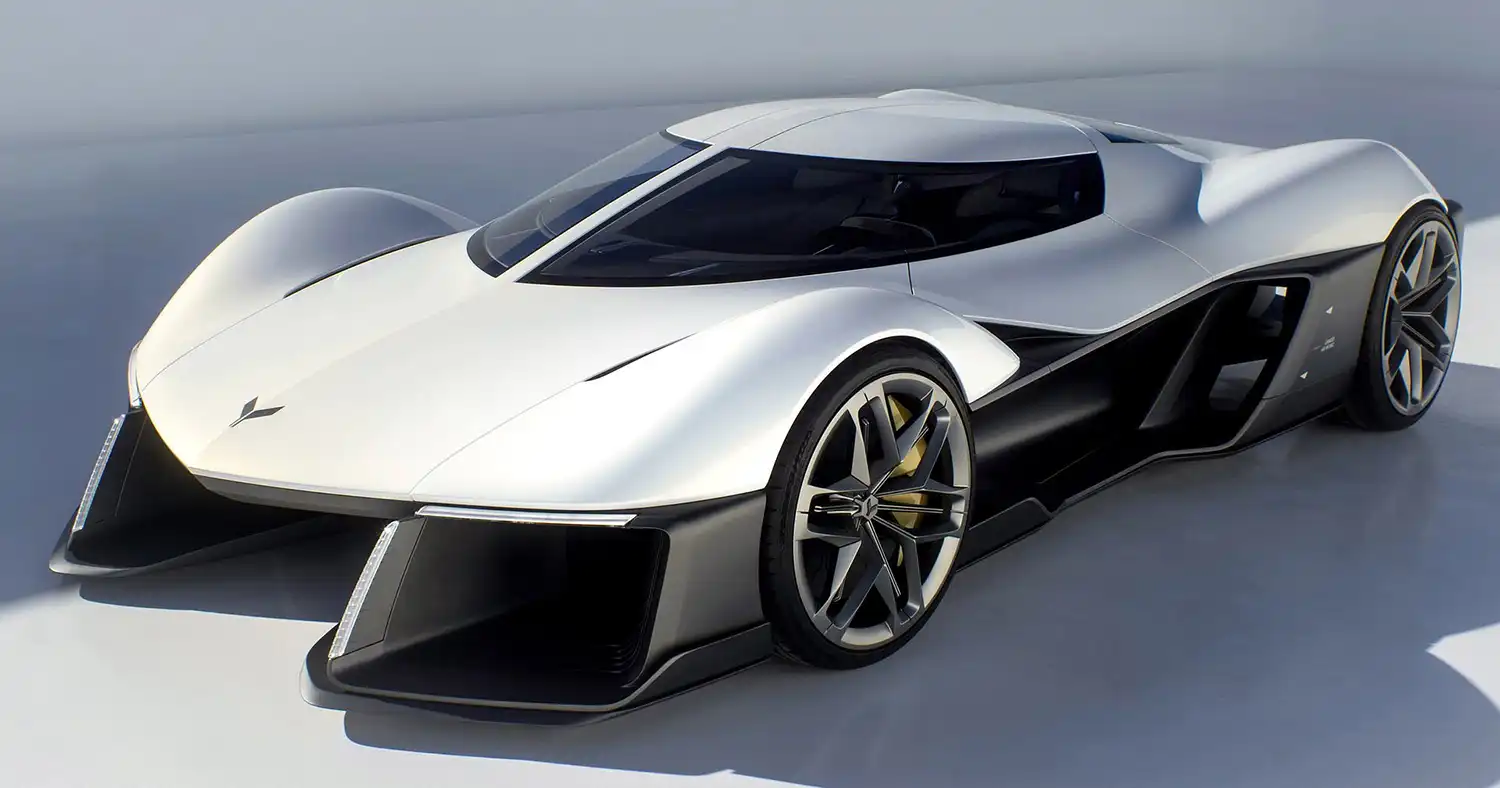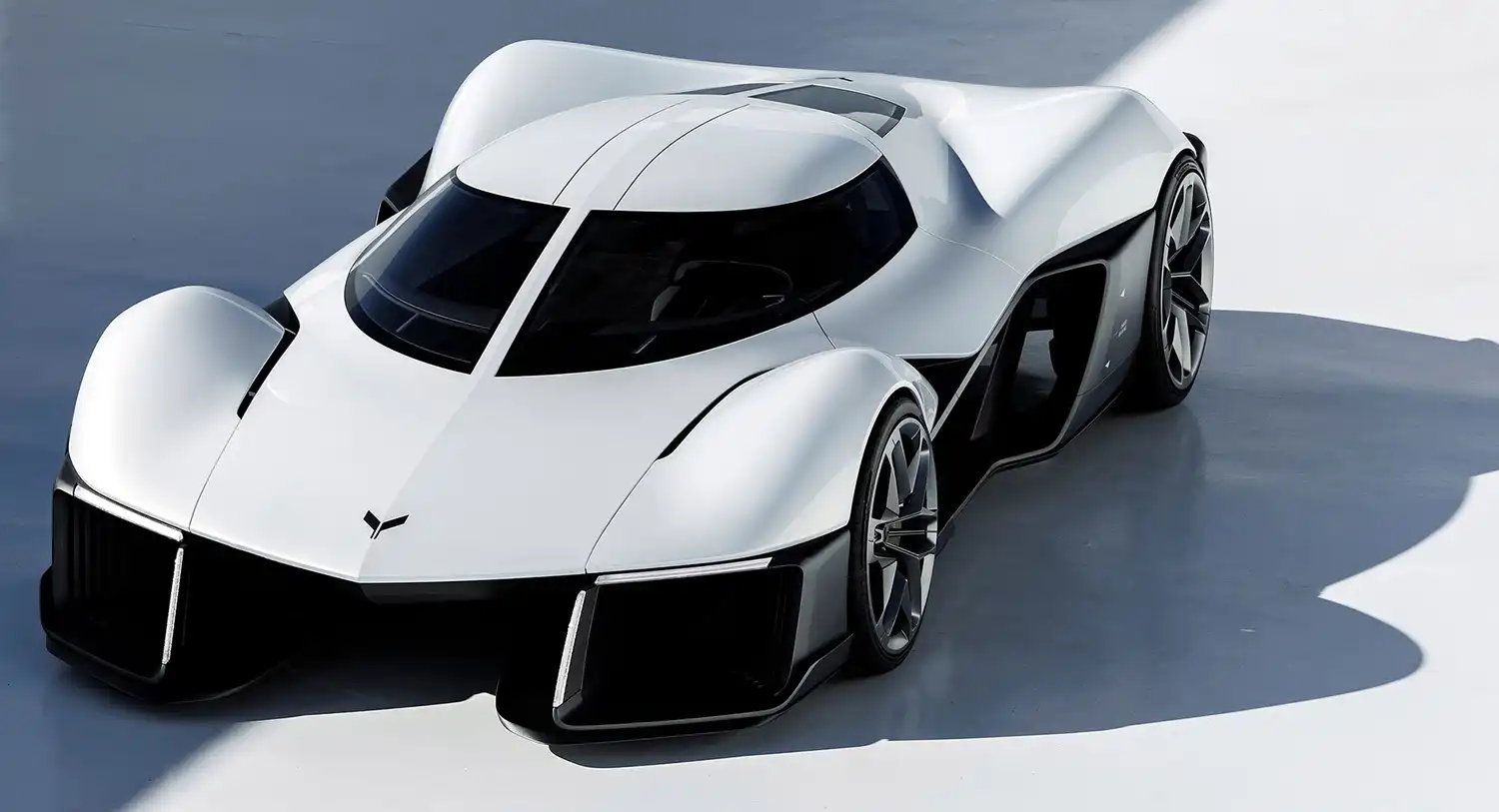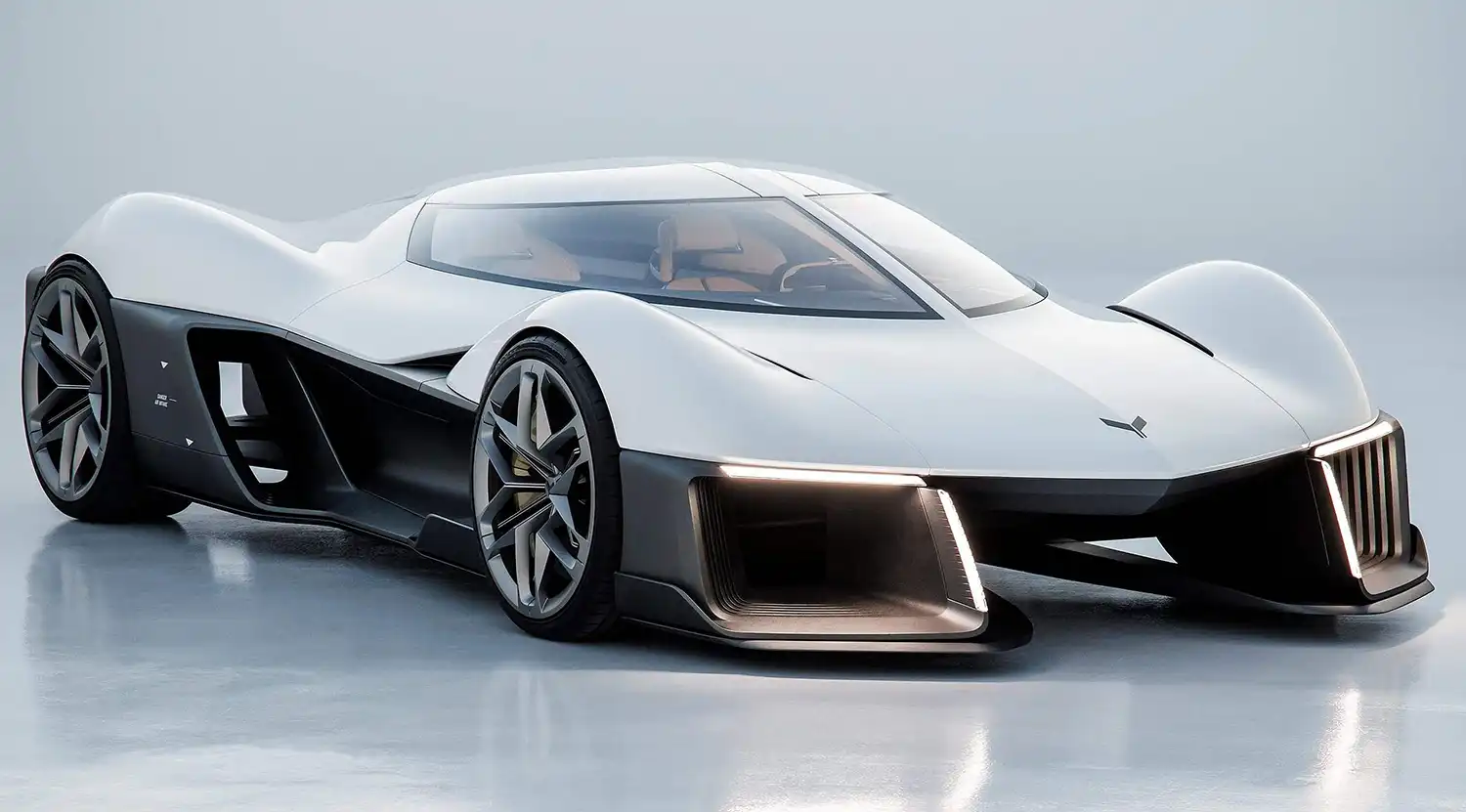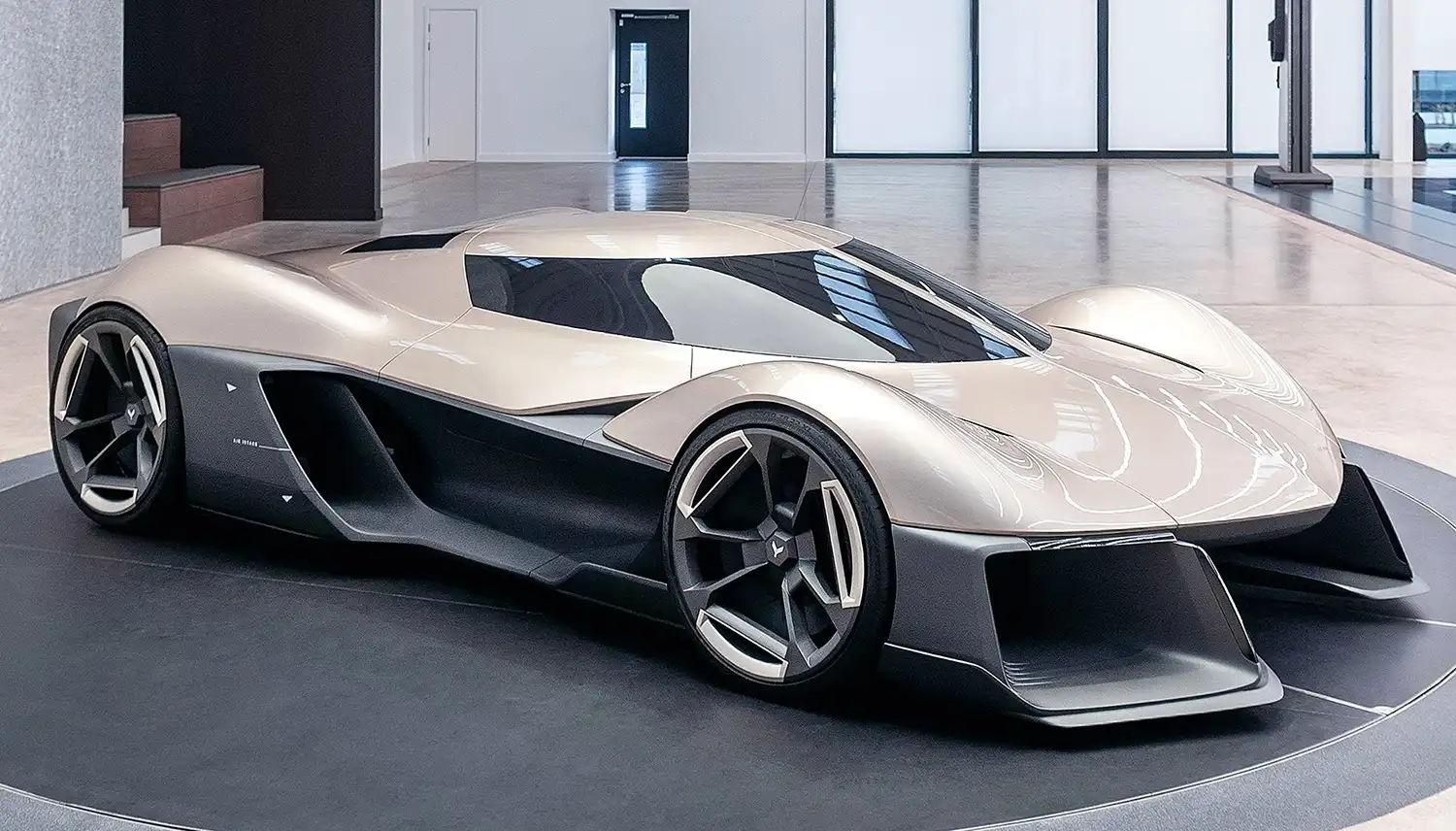
UK Studio Unveils Futuristic Chevrolet Corvette Concept, Teasing Electric Hypercar Vision
General Motors has marked the official opening of its new advanced design studio in Royal Leamington Spa, UK, with the unveiling of a striking Chevrolet Corvette concept car. This design study, born from the creative minds of the UK team, is part of a broader global design initiative that will see further Corvette concepts emerge throughout 2025. The establishment of this UK studio underscores GM’s growing commitment to the European market as it expands its Cadillac electric vehicle operations and prepares for the launch of Corvette sales across the UK and mainland Europe.
Global Design Collaboration and Innovation Hub: The Royal Leamington Spa studio joins GM’s existing global design network, which includes facilities in Detroit, Los Angeles, Shanghai, and Seoul. This interconnected network fosters collaboration and the exchange of innovative ideas across the company. The UK studio, under the leadership of Julian Thomson, a seasoned automotive designer, provides valuable insights into European customer preferences and cultural trends, injecting fresh perspectives into GM’s global design processes. The 24,584-square-foot facility is equipped for both digital design work and the physical creation of clay models, housing a team of over 30 designers and creative professionals.
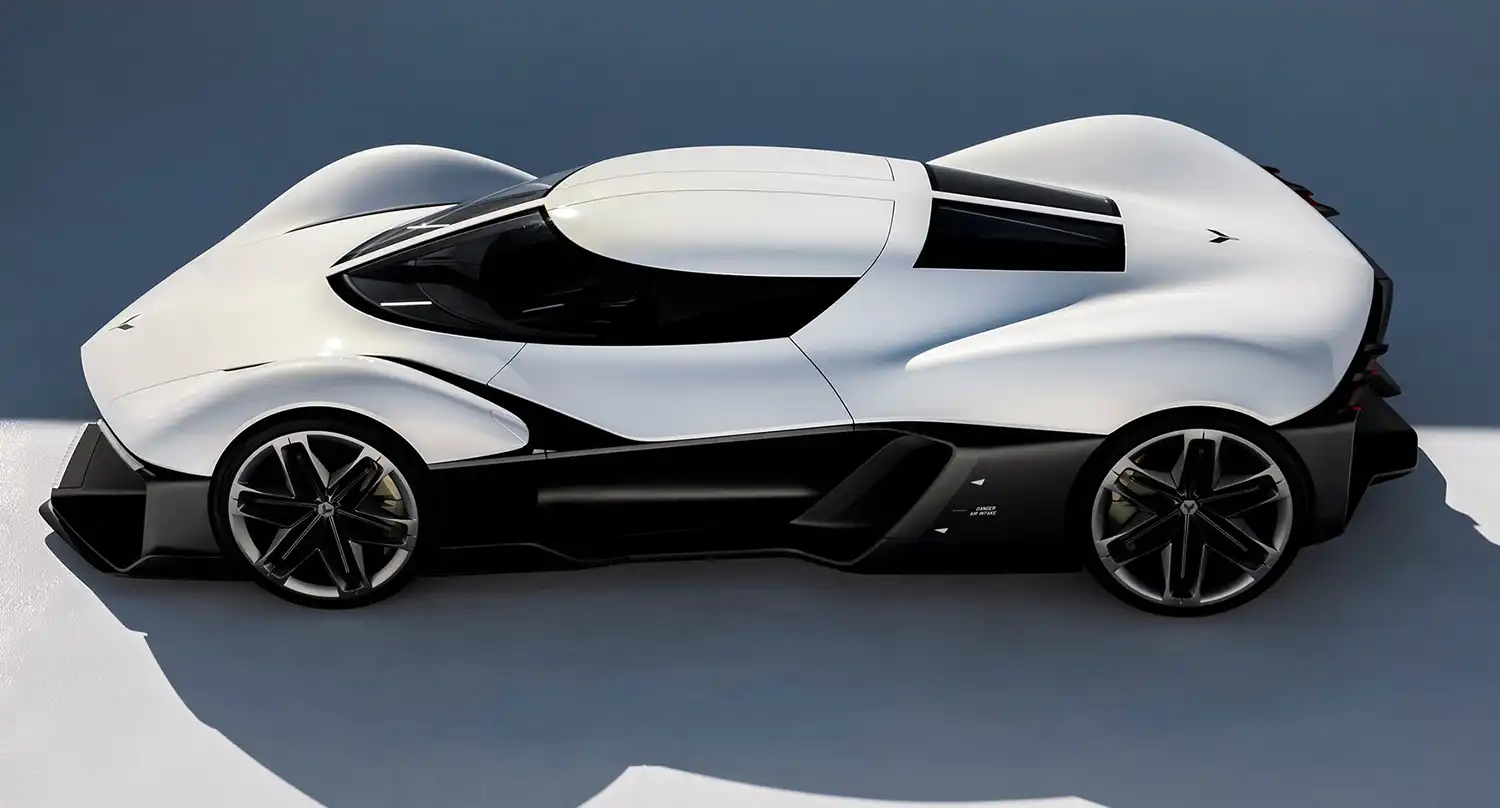
Pushing Design Boundaries with a “Blank Page” Approach: The Corvette nameplate has a rich history of serving as a platform for experimental vehicles and concepts that challenge conventional automotive design and engineering. This new UK design concept continues that tradition. While GM clarifies that there are no current production plans for this particular vehicle, the UK Design team embraced a “blank-page” approach to reimagine what a future Corvette could embody. This exercise in blue-sky thinking allows designers to explore radical ideas and push the boundaries of what is possible.
Hypercar Concepts Exploring Corvette’s DNA: According to Michael Simcoe, senior VP of global design, this UK concept is part of a larger Corvette creative study that tasked multiple global design studios with developing hypercar concepts. More of these visionary designs are expected to be revealed later in 2025. Simcoe emphasized the importance of each concept paying homage to the Corvette’s historical DNA while allowing each studio to bring its own unique creative interpretation to the project. This approach aims to “push the envelope, challenge convention and imagine what could be” within the realm of the iconic Corvette.
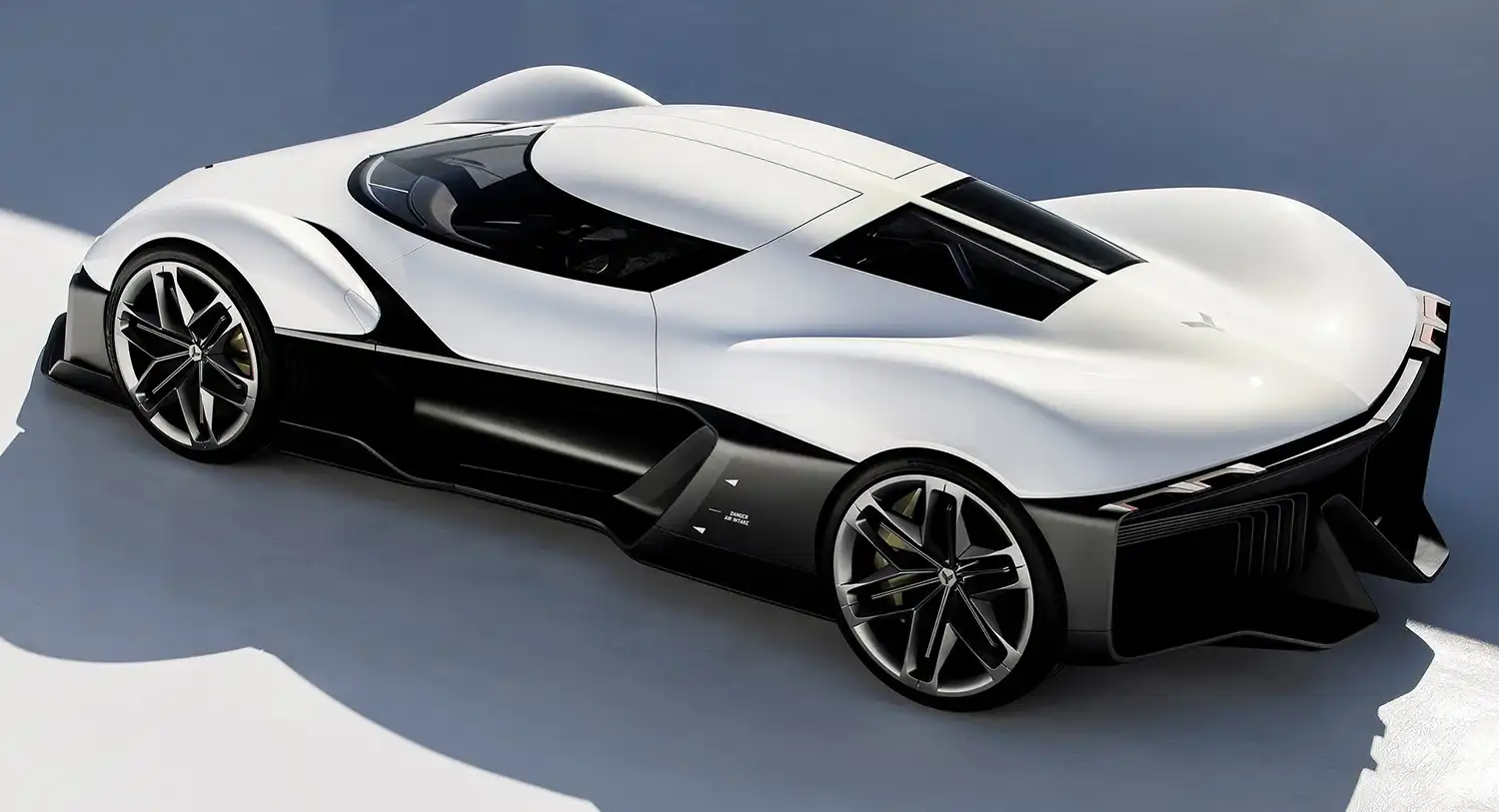
Futuristic Aesthetic Rooted in Corvette Heritage: The UK team’s concept elegantly blends the Corvette’s iconic design heritage with a distinctly futuristic aesthetic. The design language emphasizes clean, flowing forms and muscular shapes, creating a visually dynamic and sophisticated appearance. Notably, the design draws significant inspiration from the aviation industry, influencing both the sculptural aspects of the vehicle and its functional elements, hinting at advanced aerodynamic principles.
Apex Vision: A Modern Take on the Split Window: One of the most distinctive and significant design elements of this concept is the “Apex Vision” feature, as highlighted by Julian Thomson. This design cue is a modern interpretation of the iconic “split window” found on the 1963 Chevrolet Corvette Sting Ray, a nod to Corvette’s long-standing centerline focus. Apex Vision manifests as a singular vertical central spine that serves not only as a structural component but also provides the occupants with a panoramic view of the road and the surrounding environment, creating a unique and immersive driving experience.
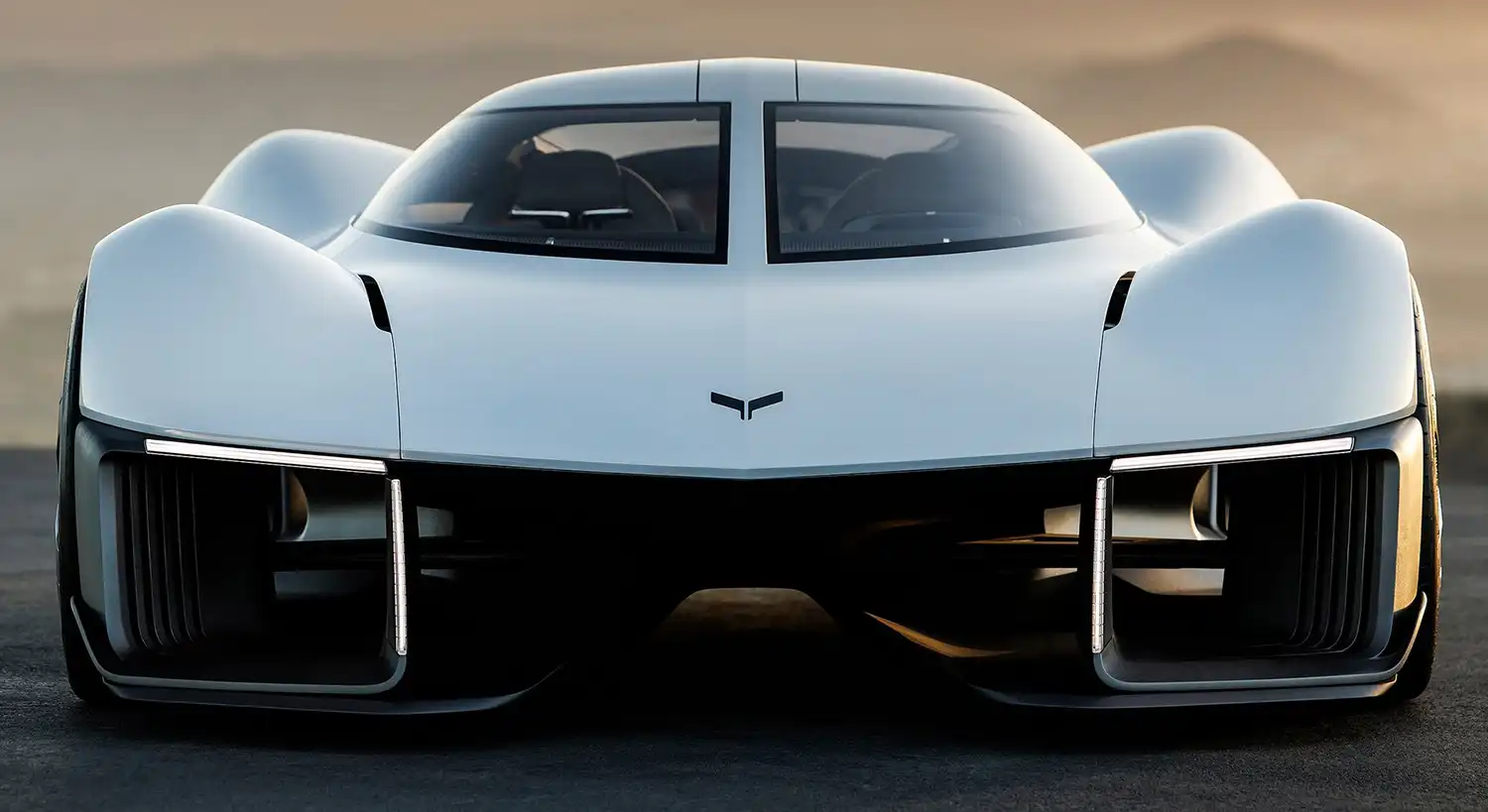
Distinctive Upper and Lower Body Division: The exterior design of the concept features a clear and purposeful division between the upper and lower halves of the vehicle. The upper portion of the design subtly incorporates classic Corvette design cues, reimagined with a futuristic lens. In contrast, the lower half of the vehicle is focused on functional technical design. This includes the strategic integration of EV battery technology directly into the vehicle’s structure and the implementation of advanced aerodynamic elements designed to efficiently channel airflow without the need for traditional wings or spoilers, showcasing a focus on both form and function.
Powertrain and Performance Details: While specific powertrain details are not explicitly provided in the press release, the text does highlight the integration of EV battery technology into the vehicle’s structure. Furthermore, the emphasis on “Aero-Duality,” including active ducting, fan assistance, and reconfigurable aero surfaces for both on-road efficiency and on-track performance with aero vectoring, suggests a highly advanced and likely electric powertrain designed for both efficiency and high performance. The racecar-inspired chassis with pushrod suspension further indicates a focus on dynamic handling capabilities.
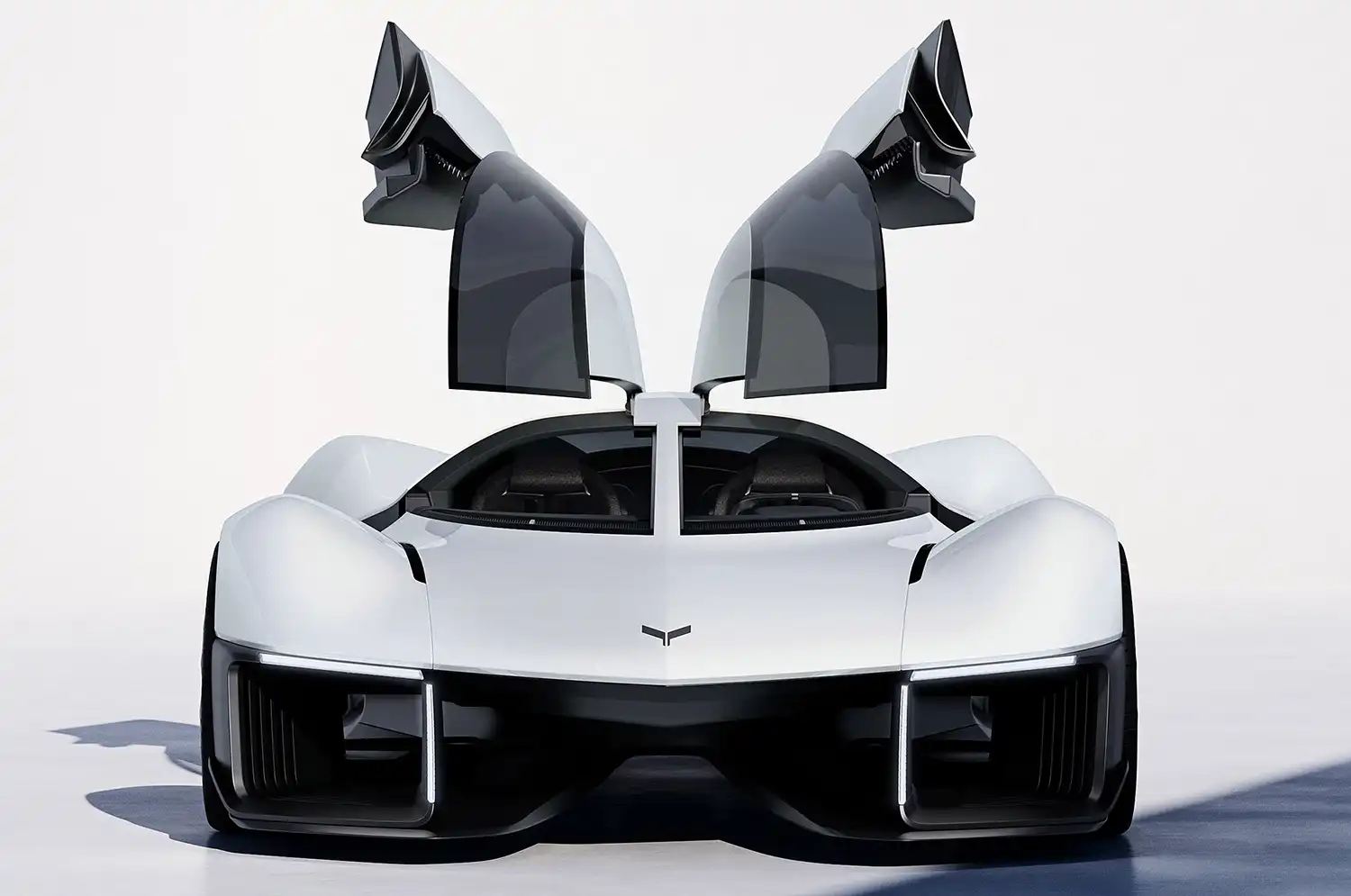
Advanced Aerodynamic Principles for Efficiency and Performance: The concept explores the duality of aerodynamic performance with its “Aero-Duality” approach. This philosophy aims to harmonize on-road efficiency with on-track performance capabilities. The design incorporates fan assistance and active ducting systems to intelligently redirect airflow over and through the vehicle. For on-road driving, the focus is on flowing forms, functional intakes, and vented surfaces that direct air to fill the vehicle’s wake, thereby increasing efficiency and driving range. For high-performance track driving, the aerodynamic surfaces dynamically reconfigure, dorsal fins deploy, and spoiler venting creates aero vectoring to enhance cornering performance, akin to the sophisticated aerodynamics of an aircraft wing. Furthermore, a sculpted underbody, combined with a lowered ride and fan assistance, is designed to deliver significant ground effect.
Racecar-Inspired Chassis and Advanced Interface: The concept features a racecar-inspired chassis design, emphasizing packaging efficiency and utilizing a pushrod suspension setup for optimal handling and performance. Inside the vehicle, the traditional instrument panel is replaced by a “Windshield center spar augmented display,” suggesting an advanced and integrated interface that likely projects crucial information directly within the driver’s line of sight, further blurring the lines between automotive and aviation design principles.
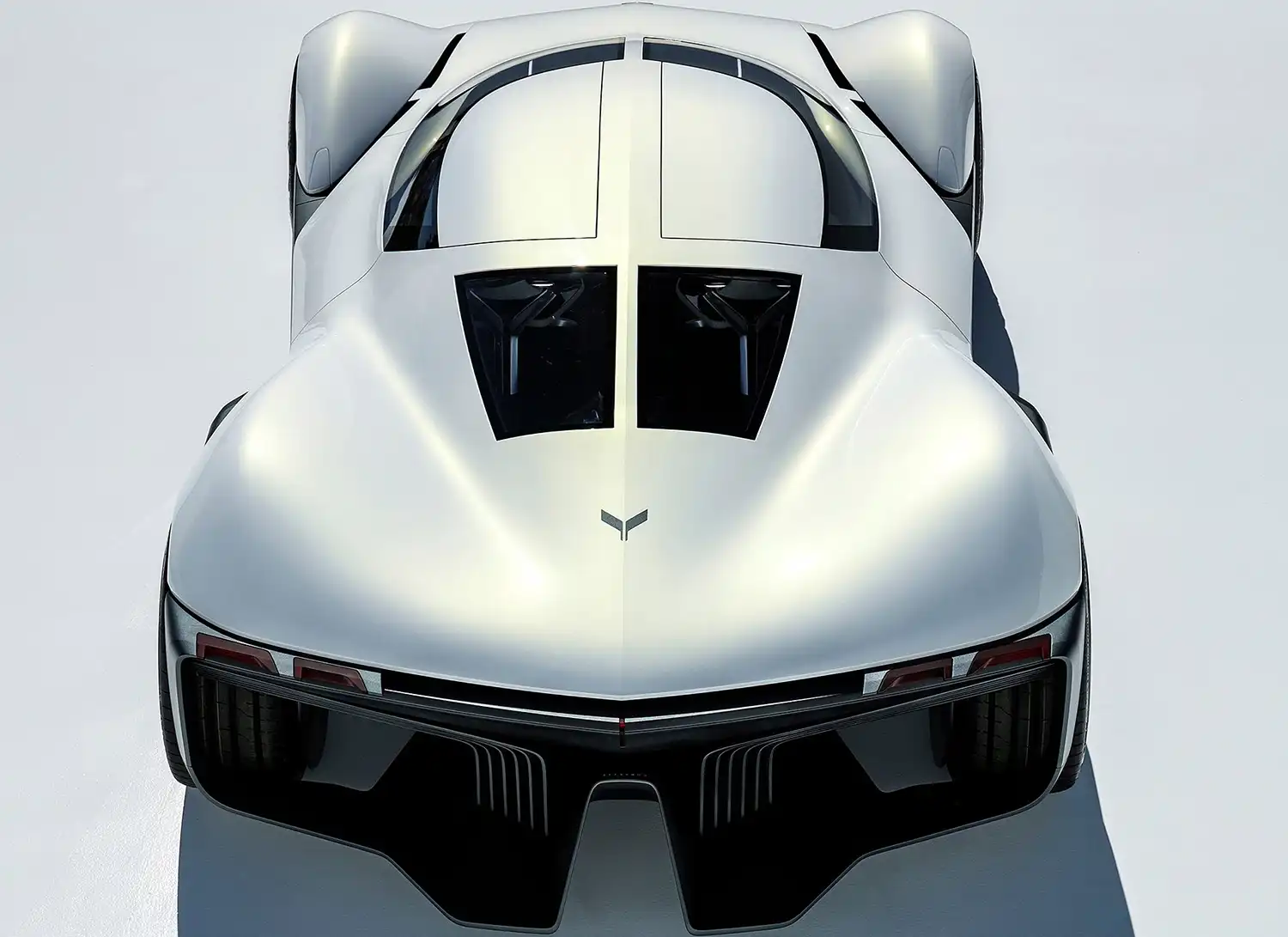
Compact Hypercar Dimensions: The concept presents with the following dimensions: a of 1033mm, a width of 2178mm, and a length of 4669mm. It rides on large 22-inch front wheels and even larger 23-inch rear wheels, contributing to its aggressive stance and visual presence. The low seat of 127mm, inspired by race car design, further emphasizes the vehicle’s performance-oriented nature.
Summary:
- General Motors unveils an advanced design study Chevrolet Corvette concept developed in the UK.
- The concept is part of a global design project exploring future Corvette possibilities.
- The UK design studio opening highlights GM’s commitment to the European market.
- The concept blends Corvette heritage with a futuristic, aviation-inspired aesthetic.
- Key design features include “Apex Vision,” a modern take on the split window.
- The exterior features a distinct division between upper (classic design) and lower (functional EV/aero) sections.
- The concept likely features an advanced electric powertrain focused on efficiency and performance.
- “Aero-Duality” explores advanced aerodynamics for both efficiency and track performance.
- The concept features a racecar-inspired chassis with pushrod suspension.
- An augmented display is integrated into the windshield center spar.
- The concept showcases compact hypercar dimensions.
Disclaimer: This article describes a conceptual vehicle with no current production intent. All specifications and features mentioned are hypothetical and for design exploration purposes only. The future availability and design of any production Corvette models may differ significantly.
Srouce : Chevrolet
AI Assistance: Gemini
